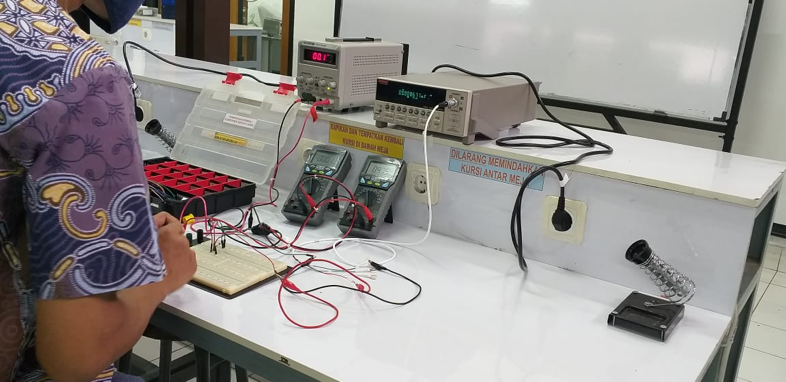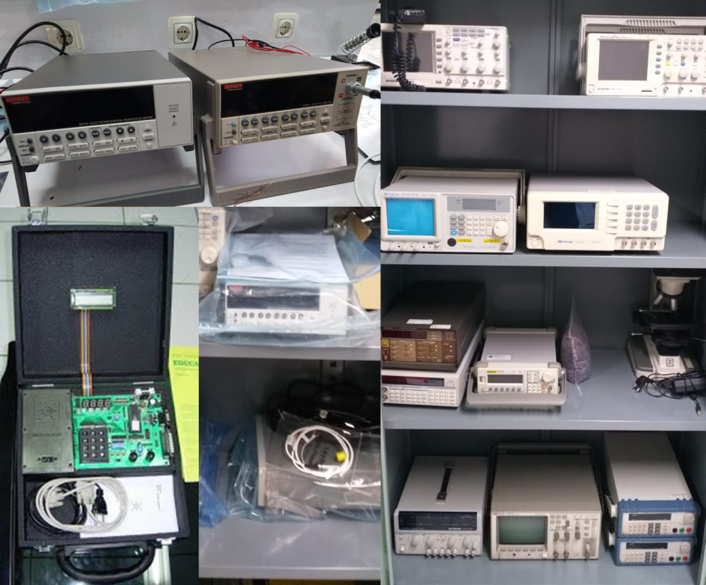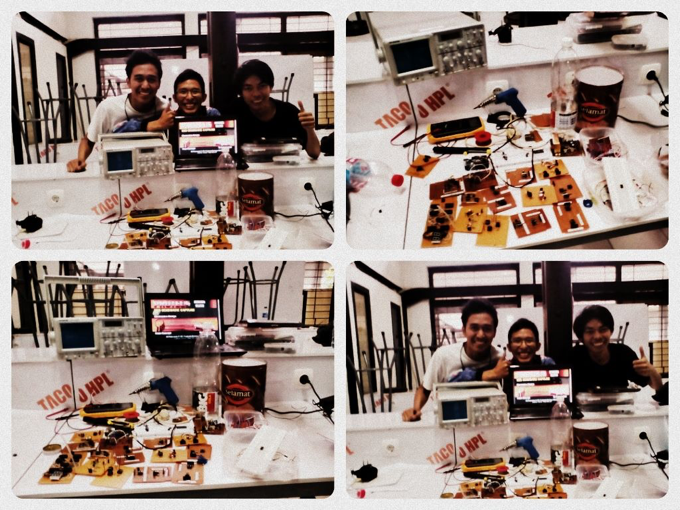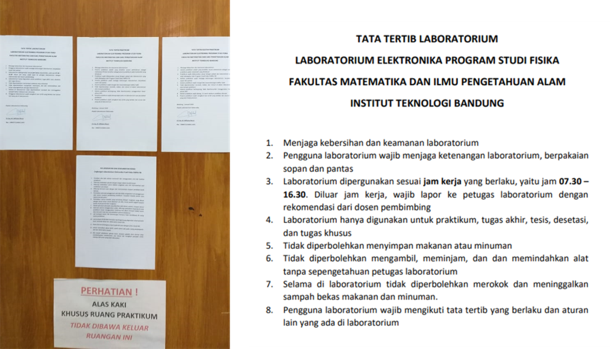Electronics Physics Laboratory
The ITB Department of Physics has several scientific focuses which is one of them is the field related to electronics and instrumentation. Academic staff with research interests are related to the field of instrumentation or computation are grouped into Instrumentation and Computational Physics research division (KK FIK). However, staff from other physics research divisions need electronics knowledge in conducting their research. Therefore, to facilitate the necessity of research experiments in general and basic electronics practicum activities for serving students, the ITB Department of Physics provides an Electronics Laboratory. The laboratory is managed by the laboratory head and assisted by a technician. Meanwhile, to facilitate practicum, the laboratory is also assisted by practicum assistants who are students that have passed the practicum and Electronics courses. The laboratory room with a capacity of up to 32 people provides a complete facility to support practicum activities and research experiments.

Facilities
Electronics Physics Laboratory ITB provides quite complete facilities – from a standard practicum apparatus to a high-precision and high sensitivity apparatus. The standard practicum apparatus consists of a microtrainer MCS-51, multimeter, oscilloscope, power supply, signal generator, breadboard, jumper wire, and electrical components such as resistors, capacitors, inductors, transistors, transformers, operational amplifier (Op-Amp), and LED. Meanwhile, for research experiment purposes, the laboratory provides high-precision and high-sensitivity apparatus. Some of these apparatuses are High Resistance/Low Current Electrometers (Keithley 6571B) and Nanovoltmeter (Keithley 2182A), Micro-Ohm meter (Lutron MO-2014), Digital Bench Multimeter (Fluke 8808A), and Spectrum Analyzer (Siglet SSA3021X).

Services
In addition to providing apparatus lending facilities for research experiment purposes, Electronics Physics Laboratory ITB also provides services in the form of practicum. There are two practicums, microcontrollers and interface system practicum and basic electronics practicum. Microcontrollers practicum uses Microtrainer MCS-51 module. Microtrainer MCS-51 is developed to support Microcontroller and Digital Instrumentation courses (Code FI3171). Through the Microtrainers MCS-51, students can practice the basics of microcontroller that are Input-Output analog/digital, timer/counter and PWM, display in seven-segment and LCD, and serial communication. Meanwhile, the basic electronics practicum is held by Electronics Laboratory every odd semester to support Electronics courses (Code FI2103). Usually, basic electronics practicum consists of 9 modules, where practicum is carried out 1 module per week. Modules 1 and 2 cover the basics of measurement and electronics circuit simulation. In this module, practitioners are expected to do the basic measurements, such as measuring voltage, current, and resistance. Moreover, the practitioners are introduced to the use of circuit simulation that will be useful for design purposes and electric circuit simulation. In practicum module 3, the practitioners try and analyze the diode circuit (as a clipper, clamper, and rectifier). Module 4 covers a passive filter circuit (low pass filter, high pass filter, and bandpass filter). Then in module 5, the practitioners are guided to be able to produce PCB design. Furthermore, in module 6 and 7, the practitioners will be given a chance to understand the transistor and its application as a power amplifier. Meanwhile, module 8 introduces amplifier to the practitioners using op-amp. Lastly, in module 9, the practitioners will be introduced to digital electronic, called logic gate AND, OR, NOT, and multivibrator and counter.

Apparatus Storage Room
All apparatuses are stored safely in a metal cabinet. Some sensitive apparatuses are stored in a special room with low humidity. Apparatuses are grouped based on their use into practicum or research experiment. Accessories for practicum consists of packages that have been filled with electrical components and measurement instruments according to provisions of the module.

SOP
Practicum and research experiment activities in Electronics Laboratory are required to follow rules, maintain security and safety, and pay attention to the procedures in emergency conditions. Apparatus lending services operate every workday and the apparatus can only be used in the practicum room. Unless an apparatus is needs to be taken out of the lab, the borrower of the apparatus is required to fill in the loan form and leaves the students/staff ID. Meanwhile, for practicum services, practicum participants are required to follow the rules of practicum. Among these rules are discipline, doing preliminary assignments, being careful and always maintaining security and safety during practicum activities, and making practicum reports.

Logo of Electronics Physics Laboratory

Logo philosophy: The logo frame is a representation of IC (integrated circuit) with many pins shows an integrated laboratory that has many benefits both as education through practicum, and in research by providing variety of qualified measuring instruments.
